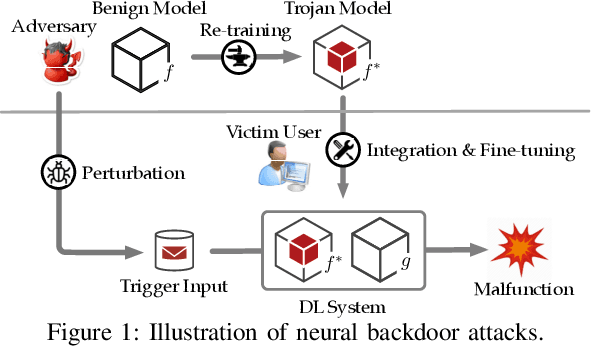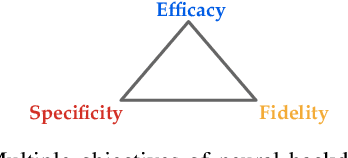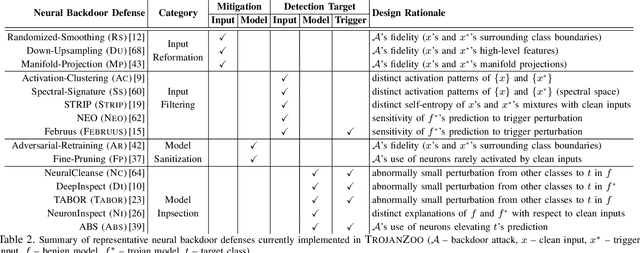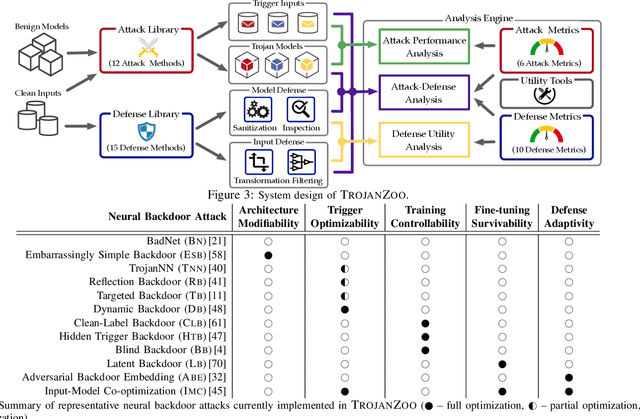TROJANZOO: Everything you ever wanted to know about neural backdoors
Paper and Code
Dec 22, 2020



Neural backdoors represent one primary threat to the security of deep learning systems. The intensive research on this subject has produced a plethora of attacks/defenses, resulting in a constant arms race. However, due to the lack of evaluation benchmarks, many critical questions remain largely unexplored: (i) How effective, evasive, or transferable are different attacks? (ii) How robust, utility-preserving, or generic are different defenses? (iii) How do various factors (e.g., model architectures) impact their performance? (iv) What are the best practices (e.g., optimization strategies) to operate such attacks/defenses? (v) How can the existing attacks/defenses be further improved? To bridge the gap, we design and implement TROJANZOO, the first open-source platform for evaluating neural backdoor attacks/defenses in a unified, holistic, and practical manner. Thus, it has incorporated 12 representative attacks, 15 state-of-the-art defenses, 6 attack performance metrics, 10 defense utility metrics, as well as rich tools for in-depth analysis of attack-defense interactions. Leveraging TROJANZOO, we conduct a systematic study of existing attacks/defenses, leading to a number of interesting findings: (i) different attacks manifest various trade-offs among multiple desiderata (e.g., effectiveness, evasiveness, and transferability); (ii) one-pixel triggers often suffice; (iii) optimizing trigger patterns and trojan models jointly improves both attack effectiveness and evasiveness; (iv) sanitizing trojan models often introduces new vulnerabilities; (v) most defenses are ineffective against adaptive attacks, but integrating complementary ones significantly enhances defense robustness. We envision that such findings will help users select the right defense solutions and facilitate future research on neural backdoors.
 Add to Chrome
Add to Chrome Add to Firefox
Add to Firefox Add to Edge
Add to Edge